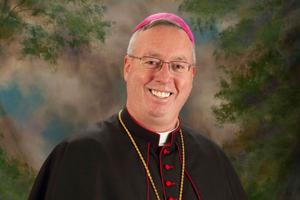Sts. Peter and Paul, the True Romulus and Remus
COMMENTARY: Their shared date of martyrdom showed that the two apostles were born into eternal life on the same day and so are twins in eternity.

On June 29, the people of Rome and believers throughout the world celebrate the high feast day of the two great apostles, Peter and Paul. The two are the patron saints of the Eternal City, as well as pillars of the universal Church. Saint Peter was the chief apostle, our first pope. Saint Paul is the Apostle of the Gentiles.
By tradition, the two apostles share the same feast day since it was believed that both apostles died on June 29 around the year 67 AD. While the historicity of the year is debated today, the belief of a shared day of martyrdom is deeply ingrained in the mind and evangelization of the city of Rome.
While God’s people of Israel received prophecies and promises and were uniquely fashioned and formed to recognize and welcome the Anointed Savior, the rest of humanity only received small glimpses of God’s revelations.
The early Fathers explained that God sprinkled “seeds” of truth and goodness within all peoples and nations. For many tribes and cultures, such seeds were given through myths. The seeds were given by God so that everyone could discern some aspect of his presence and goodness. The seeds were intended to awaken people and lead them to a greater grasp of the truth and a deeper hunger for righteousness.
The pride and importance of such myths cannot be dismissed or underestimated. Ancient peoples and city-states identified themselves by such myths and saw reality through them. No city-state would just exist. No tribe would simply coast without direction or a sense of the sacred. Every people possessed a valued narrative.
Rome needed a robust narrative as it emerged from humble beginnings and conquered vast portions of the known world.
As a thriving republic and then dominating empire, Rome grounded and prided itself in the mythic story of its foundation. Drawing from the rich mythology that surrounded the Trojan War, Rome claimed a lineage from Aeneas, one of the princes of Troy and one of the most iconic figures of the ancient world.
Rome claimed that a descendant of Aeneas gave birth to twin brothers, Romulus and Remus. After their birth, a rebellion was waged against the children’s grandfather and the young twins were left in the wilderness to die.
The two, however, were nurtured by Lupa, a she-wolf. They grew in power and wisdom and eventually founded the city of Rome. Romulus and Remus, therefore, were hailed as princes of Rome and their story and lineage were used as sources of credibility and prominence.
Incidentally, even today the image of the twins and the she-wolf are on the shield of the city of Rome.
The early Christians of Rome were also heavily influenced by the myths of the city. As Gentile Christians, they sought to see how God was working through their own narrative. Although the prophecies of Israel are infinitely superior to all myths, the pagan myths were significant and served as an avenue for Gentiles to encounter and accept the divinely revealed fullness of God’s revelation.
As the Gentile Christians of Rome, therefore, sought to comprehend the ways of God, they explored their own stories. By the working of the Holy Spirit, they saw the fulfillment of their own myths in the Gospel of Jesus Christ and in the lives of his holy ones.
The princely figures of Romulus and Remus stood supreme in Roman identity and imagery. And so, in venerating the story of the twin brothers, they eventually saw Sts. Peter and Paul as a new and improved Romulus and Remus. They looked for ways in which the two apostles fulfilled the myth of Romulus and Remus and so were the true founders of Rome.
The Christians of Rome saw Sts. Peter and Paul as true brothers in the Lord Jesus. Through baptism, the two apostles were more authentically brothers than the mythic Romulus and Remus. The shared date of martyrdom was particularly significant in the context of fulfilled myth since it showed that the two apostles were born into eternal life on the same day and so are twins in eternity.
For the Roman mind at that time, such conclusions were evidence enough to prove that the two apostles were the new Romulus and Remus, the true princes of the city. Through these conclusions, it was an easy move for the Gentile Christians to see the place of the two great apostles as the patrons of the Eternal City of Rome.
While the blurring between myth and history might make modern day believers uneasy, the innocence of faith and the desire for continuity were sufficient and edifying to the early Christians of Rome.
The Gentile Christians heeded the wisdom summarized elsewhere by St. Paul:
“Finally, brothers and sisters, whatever is true, whatever is noble, whatever is right, whatever is pure, whatever is lovely, whatever is admirable — if anything is excellent or praiseworthy — think about such things.” (Philippians 4:8)
The early Christians of Rome and throughout the empire sought to baptize all things. When many of the early Christians died martyrs for the faith, it was not because they refused to engage with culture, but because culture was unwilling to engage with them and sought to impose compromise on the Gospel.
As we hail the glorious martyrs Peter and Paul on their shared solemnity, we hail the true Romulus and Remus, the twins who make Rome truly eternal by the heroic proclamation of Christ Crucified and the triumphant shedding of their brotherly blood.
Father Jeffrey Kirby is a priest of the Diocese of Charleston, SC. He is moral theologian and the host of the daily devotional, The Morning Offering with Father Kirby.
- Keywords:
- sts. peter and paul
- romulus
















